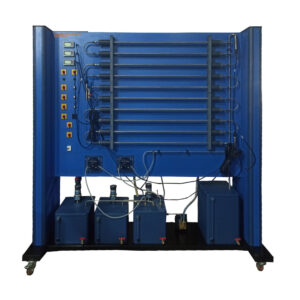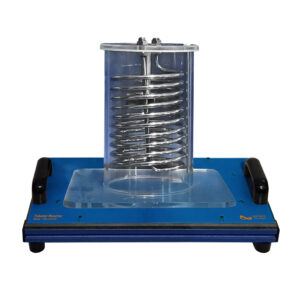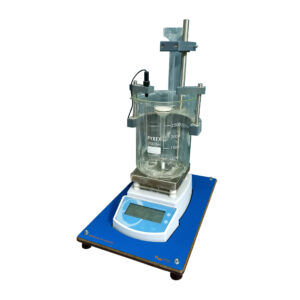Solids are, usually, more difficult to treat than liquids, vapors or gases. During the processes, the solids may be presented in some types: big angular pieces, continuous wide sheets or powders pulverized in a refined way. They may be hard and abrasive, resistant or gummy, soft or fragile, dusty, plastic or sticky. Independently of its shape, it is necessary to find ways to manipulate the solids in the way they are shown, and, if it is possible, to improve its manipulation characteristics. This apparatus is a teaching unit that allows students to study in depth easily the basics that they may have about the unitary operations of solids manipulation. The student will obtain data and very useful experimental results for the perfect practical comprehension of the processes and, therefore, for the technical training of the student. The Solids Handling Study Unit is designed to introduce the students in different aspect of solids behavior, unit operations as size reduction, mixing, transport, discharge, weighing, etc. The unit consists of a bench on which are mounted several elements: ball mill, shaker and sieves, V-blender, cyclone, rotary cylinder, balance, etc.
Experiments
- Sieving techniques.
- Study of size reduction.
- Classification study according to the size.
- Milling: Ball mill. Observation of the comminution of solids processed through a ball mil.
- Study of the angle of repose and demonstration of stratification.
- Study of the apparent density.
- Study of the effect of mixture content.
- Determination of bulk solids parameters of density.
- Solids unloading study in hoppers.
- Cyclone operation. Solids separation.
- Pneumatic conveying.
- Study of solids mixing.
- Solids weighing.
- Mixer operation.
- Sieves operation.
Specifications
- Ball mill with variable speed and various sizes of balls.
- Motor for the ball mill.
- Vibratory shaker and a set of eight sieves with several hole mesh.
- V-Blender.
- Blowing and ejector.
- Compressor with pressure safety protection.
- Cyclone and pneumatic conveyor.
- Transparent horizontal angle of repose rotary cylinder with protractor.
- Cylindrical hoppers with different size of exit orifices.
- Collecting tray.
- Balance (scale).
- Graduated test tube.




